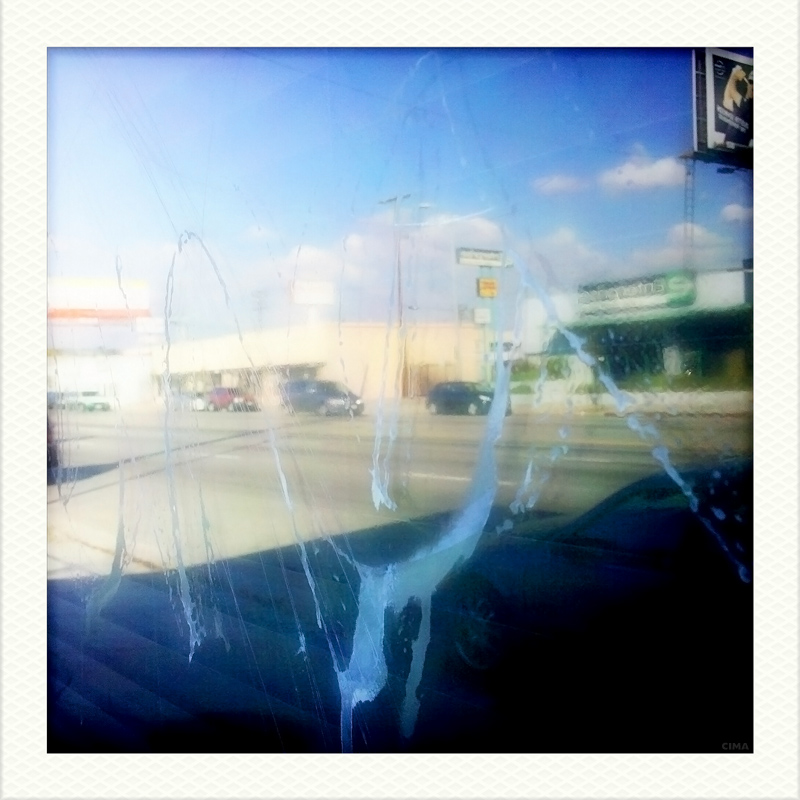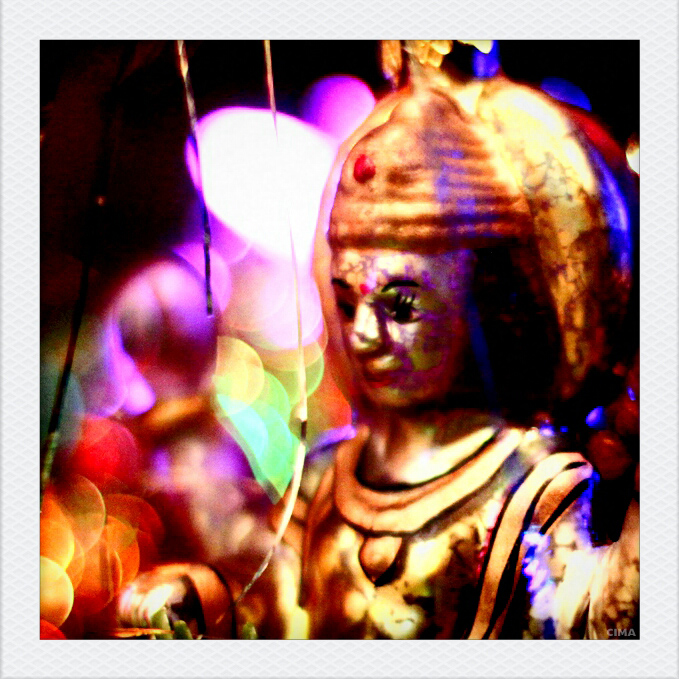Category Archives: Photography
Photo: Christmas Tree Deity
Aleph: California Beat Artist Wallace Berman’s Only Film
While I was running through the Getty Center’s flagship portion of the massive citywide ‘Pacific Standard Time‘ art exhibit, I was struck by just how great this Wallace Berman fellow really was. Known primarily as the ‘father’ of assemblage art, he was also a member of the Beat Movement. He made a single film which occupied much of his time through the 1960s and 70s. It’s less than eight minutes long and it’s a drop dead gorgeous thing to see. He’s one of those film artists interested in what I like to call the messy image. The film seems to have been dragged through ink and dirt. It’s been scratched, wrinkled, folded, cut, slashed and stained. Letters flash by like subliminal messages. Pop culture crashes into modern art. He films magazines, papers, radios, faces, hands, rock stars, body parts, buildings, streets and apparently just about everything he had lying around in his studio. This film is a quiet little reminder that crystal clear HD and super sharp focus are not anywhere near the concerns of some artists.
And here is California assemblage artist George Herms talking about Berman recently as part of the Pacific Standard Time series of exhibits:
Crosscurrents: Film About Pacific Standard Time Art Exhibits Focused on Los Angeles Art From 1945 – 1980
Pacific Standard Time is a massive overview of Los Angeles art from 1945 to 1980. At least sixty galleries and museums are taking part over the next few months. I have already been to the largest exhibits at the Museum of Contemporary Art, Los Angeles County Museum of Art, and the Getty Center. The whole thing is a lot of fun and I have discovered artists I never knew about before. There are magnificent things on display and the curators have also published big books to go along with each exhibit. I seriously recommend that you always get the books because they have far more information in them than the exhibits themselves. I view it as my own effort to compile a record of this unique regional art show.
You can find almost everything you need at the Pacific Standard Time web site.
This film was put together for the Getty Center’s flagship exhibit, Crosscurrents, which covers 1950 to 1970. It’s a very nice little documentary about some of the major art developments in Los Angeles.
Robert Frank Film of The Rolling Stones
It’s all very confused and mysterious. In 1972, the Rolling Stones hired photographer and filmmaker Robert Frank to make a film about their American tour. He made something wonderful called ‘Cocksucker Blues,’ which immediately angered the Stones because it actually showed them to be the ultra coolest and baddest band in the world. They sued him to keep the film out of circulation. Go figure. Why would you sue a guy for making the one absolute piece of evidence that you are what you say you are: ‘The greatest rock & roll band in the world?’ Well I don’t know the answer. Drugs and addled minds perhaps. This short film is actual footage taken by Frank on Super 8 cameras. It’s been edited by someone called Videodrumz on YouTube and put together with ‘Rocks Off’ from the ‘Exile on Main Street’ album. It’s good. It works. The footage is absolutely recognizable as Frank’s.
First Video Images Ever Reconstructed From the Human Brain
UC Berkeley scientists have recorded the first images ever generated by a human brain. Amazing. They exposed subjects to video images while recording visual activity in their brains. When they played the recorded data back they got images corresponding closely to what the subjects had just seen. What I notice about the images in the video is that faces seem to work the best. That is interesting on many levels. Perhaps facial recognition is so hard-wired into humans that we are able to generate those images more clearly than all others. This work opens the door to the ability to reconstruct imagery from dreams and memories. It’s a staggering achievement. Magnificent. I simply cannot wait to try this sometime.
Thank you to Rob Smart on Facebook.

